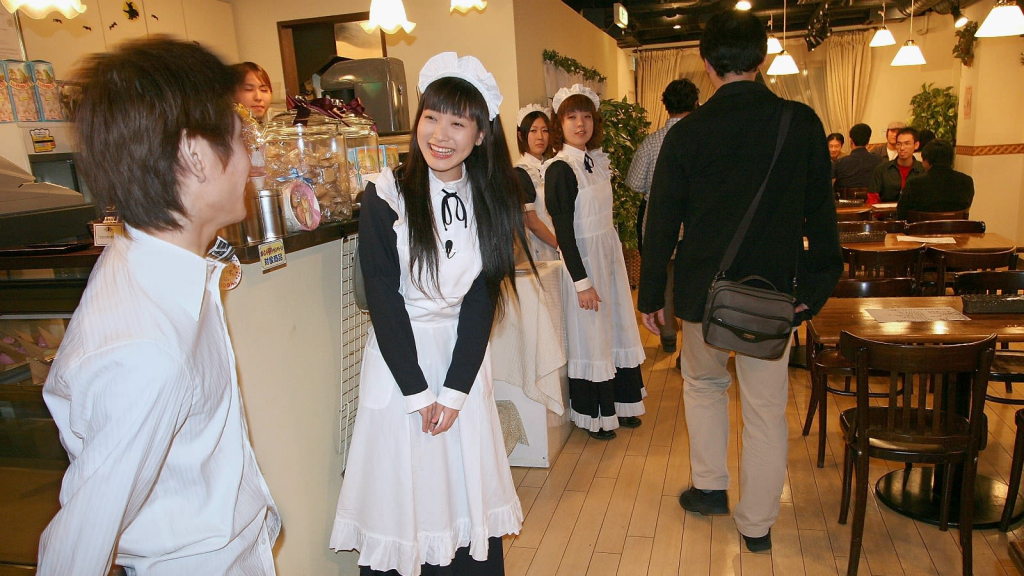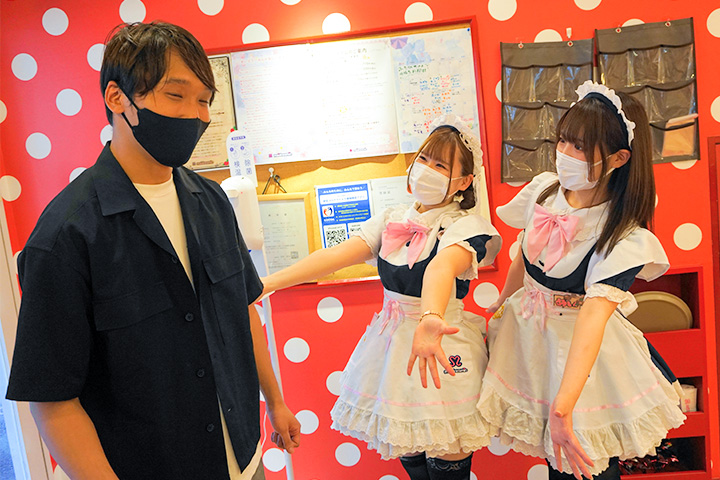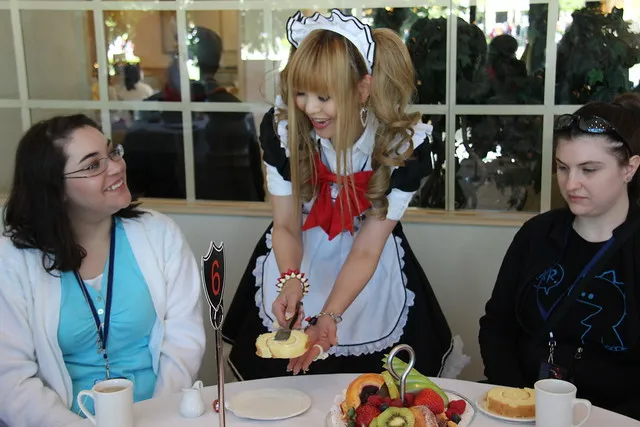
If you’re roaming about some famous districts in Japan, especially in Akihabara, then you’ve definitely stumbled across some ladies in cute maid cosplay holding a sign promoting their cafe. And if it’s your first time, you might even have tried it.
In this blog, we’ve introduced the Maid Cafe about its origin, history and how they’ve taken over the streets of Japan.
Maid cafés are cafes or coffee establishments in Japan with females dressed in maids’ outfits serving patrons. Since Akihabara is the capital of Otaku culture, Akihabara has a large variety of otaku-themed maid cafes.
History of Maid Cafe

Akihabara (Akiba) is renowned for being the epicenter of Japan’s Otaku and electronic culture. Maid Cafe found its beginnings in this part of Tokyo around 2001. They soon grew all over the country. Hundreds of cafes now serve coffee within Akihabara, and they’ve become an essential characteristic of the region.
These cafes are also called meido kissa. Waitresses are often expected to dress in a “cute” French maid outfit filled with bows, ruffles, and miniskirts. The cafeterias were initially locations primarily populated by avid gamers and otakus, expecting to find people from anime and manga in the restaurant as if they were stepping into the world of reality from the two-dimensional world.
What actually happens in a maid cafe?

The prices and the dynamics of their services differ from place to place. Prices for food and drinks tend to be more expensive than in typical cafes; however, the environment around maid cafes is quite different than your typical ones. Waitresses draw cute images into the food and talk to you like a proper maid as if you’re the master. Apart from the food, waitresses entertain guests or perform some live entertainment like dancing or singing. Casual conversations can be fun with the maids and are enjoyable among the aspects of Maid Cafes.
Aside from the cost of drinks and food, they usually charge you for their time in the cafe as in a seating charge. Certain cafes have strict timings for their guests, so you should find out the rules of the café you wish to go to before going. It isn’t much different from regular restaurants in terms of the ordering process and payment for drinks and food. Certain cafes even have English menus as many tourists venture to explore such unique establishments.
The client holds the title of the “Master.”

Maid cafes aren’t just cafes with waitresses who dress as maids. In these places, the customer is treated as “the master” (goshujinsama) of the household, while waitresses act as their maids.
In most cafes, they generally say in all restaurants isasshaimase (welcome) for the person who comes in and the word arigato gozaimashita (thank you) to the person who departs. But in the maid cafes, the custom is to say okaeri-nasai mase Goshujinsama (welcome home, master) at the time that a customer is entering, as well as itterasshaimase, Goshujinsama (see you soon, master) after he has left.
Make sure you follow these rules to make the most out of your time!
Maid cafes, at the end of the day, are cafes with a twist. So, most cafes ban physical interactions with waitresses (this can include touching hands). They have the right to kick you out if you attempt to engage in this behavior at the cafe. Be cautious.
Couples and women also love maid cafes.
The menu in a maid-café differs from typical coffee houses, offering tea and coffee and lighter meals like sandwiches and desserts. The only differences are those “magic words” the waitresses say when they draw something or write on the omu-rice to create a more appealing appearance and when they garnish the food with syrup or chocolate. At certain restaurants, customers may even take pictures with their maids or even play games at some extra cost, of course.

The customer base comprises more than just single men. You will often see both genders who need an idea of what maids are visiting for an experience. When a woman arrives at the cafeteria, the waitresses greet her with an okaeri nasaimase, ojousama (welcome home, young lady!).
Maid cafes are now an increasingly popular place to entertain guests due to their frequent appearances on the news and in magazines. In addition, many shitsuji cafes have popped up recently, with waiters dressed as butlers serving their customers as if they were their girlfriends.
History

Records show that, the first cafe that started this trend in Japan was the CURE MAID CAFE, which began operations in 2001 in Akihabara. In the coming years, @HOME CAFE popped up in 2004. The tradition of the maid cafe has flourished within Akihabara since then and is still at the heart of this specific style of culture.
A number of unique and new cafés have been launched since then. LittleTGV with a theme of trains, and Maid Cafe @ Bar MONONOPU, which brings the concept of waitresses of the Sengoku period and dress in samurai attire.
The ambiance of maid cafes is extremely welcoming and relaxing. The feeling of lordship and the nuances of Japanese otaku tradition could be worth your time for a day.
Also read about Fading Fury: The Decline of Bosozoku Culture